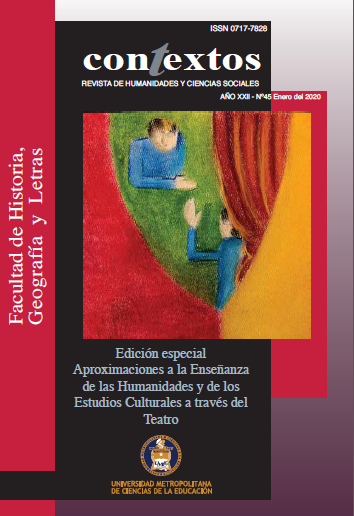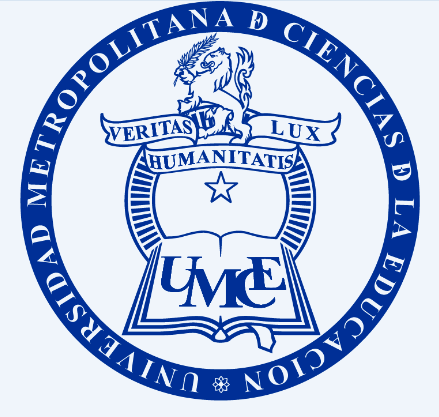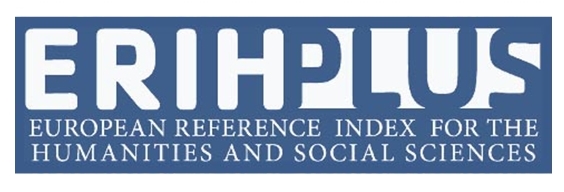Main Article Content
Jun 21, 2019
Abstract
The 2004 play Te besaré toda la vida, by Puerto Rican playwright José Luis Figueroa, is a text that illustrates the sociocultural exchanges that take place at a mall. In particular, the setting is Plaza Las Américas in San Juan, Puerto Rico, where four characters gather —and thanks to mediators or intermediarios— are able to communicate and understand each other. Along with the topic of communication, the play explores issues such as social roles of the elderly, mother-daughter relationships, and the way art is valued in daily modern life. With the shopping center as its setting, this two-act play examines sociocultural exchanges between generations, subverting capitalistic notions of what is considered socially and culturally indispensable or worthy. Highlighting the art of communication and honoring the values of old age, this play provides apt reading and discussion material in an introductory course in genre and literary analysis for students of Spanish as a second language.
Downloads
Policies for open access journals
Authors who publish here accept the following terms: Authors will keep their copyright and will guarantee the journal the right to the first publication of their work, which will be subject to the Licence of Creative Commons acknowledgement, which allows for the use of this material only if the authorship is credited and the original source is acknowledged (the journal’s URL), and if it is not used with commercial ends and with any derivations of the original work.
Authors may adopt other non-exclusive license agreements of distribution of the published version (e.g. to save it onto a digital institutional archive or publish it in a monographic volume) only if the initial publication of this journal is indicated.
It is permitted and recommended for authors to divulge their work on the Internet (e.g. institutional digital archives or webpage) before and during the submission process, which may lead to interesting exchanges and increase the citations of the publication. (See Open Access Effect).
References
Dávila, Arlene. 2016. El Mall: The Spatial and Class Politics of Shopping Malls in Latin America. Berkeley: University of California Press.
Esri, Natasha Geiling. 2014. “The birth and rebirth of the American mall.” Disponible en http://www.smithsonianmag.com/arts-culture/death-and-rebirth-american-mall-180953444/?no-ist[Consulta 12/30/2017].
Figueroa, José Luis. 2004. Te besaré toda la vida. San Juan, Puerto Rico: EditorialTiempo Nuevo.
Frambes-Buxeda, Aline. 2003. “La necesidad del mito en la cultura puertorriqueña y características de la cultura política.” Puerto Rico: Sociedad, cultura y educación. Eds. Carlos di Núbila y Carmen Rodríguez Torres. San Juan & Santo Domingo: Editorial Isla Negra. 121-130.
Herzig Shannon, Nancy. 2001.El iris de paz. El espiritismo y la mujer en Puerto Rico 1900-1950. Río Piedras, Puerto Rico: Huracán.
Hirsch, Marianne. 1981. “Mothers and Daughters.” Signs7.1: 200-222.
Huyke Souffront, Héctor José. “De sentarme en la fuente de Plaza las Américas.” Disponible enhttp://www.80grados.net/de-sentarme-en-una-de-las-fuentes-de-plaza-las-americas-2/#sthash.xKKqUGCk.dpuf[Consulta 12/30/2017].
Ramos Perea,Roberto. 2012. 4 ensayos jodidos y una obra de teatro. San Juan, Puerto Rico: Ediciones Puerto.
Rich, Adrienne. 1979. “Motherhood: The Contemporary Emergency and the Quantum Leap (1978).” On Lies, Secrets, and Silence. New York & London: Norton and Company.
Santiago Lucerna, Javier. “Adiós, Plaza las Américas.” Disponible enhttp://www.revistacruce.com/politica-y-sociedad/item/2130-adios-plaza-las-americas[Consulta 12/30/2017].
Sarlo, Beatriz.1998. “El centro comercial.” Disponible enhttp://www.jornada.unam.mx/1998/03/22/sem-sarlo.html[Consulta 12/30/2017].






